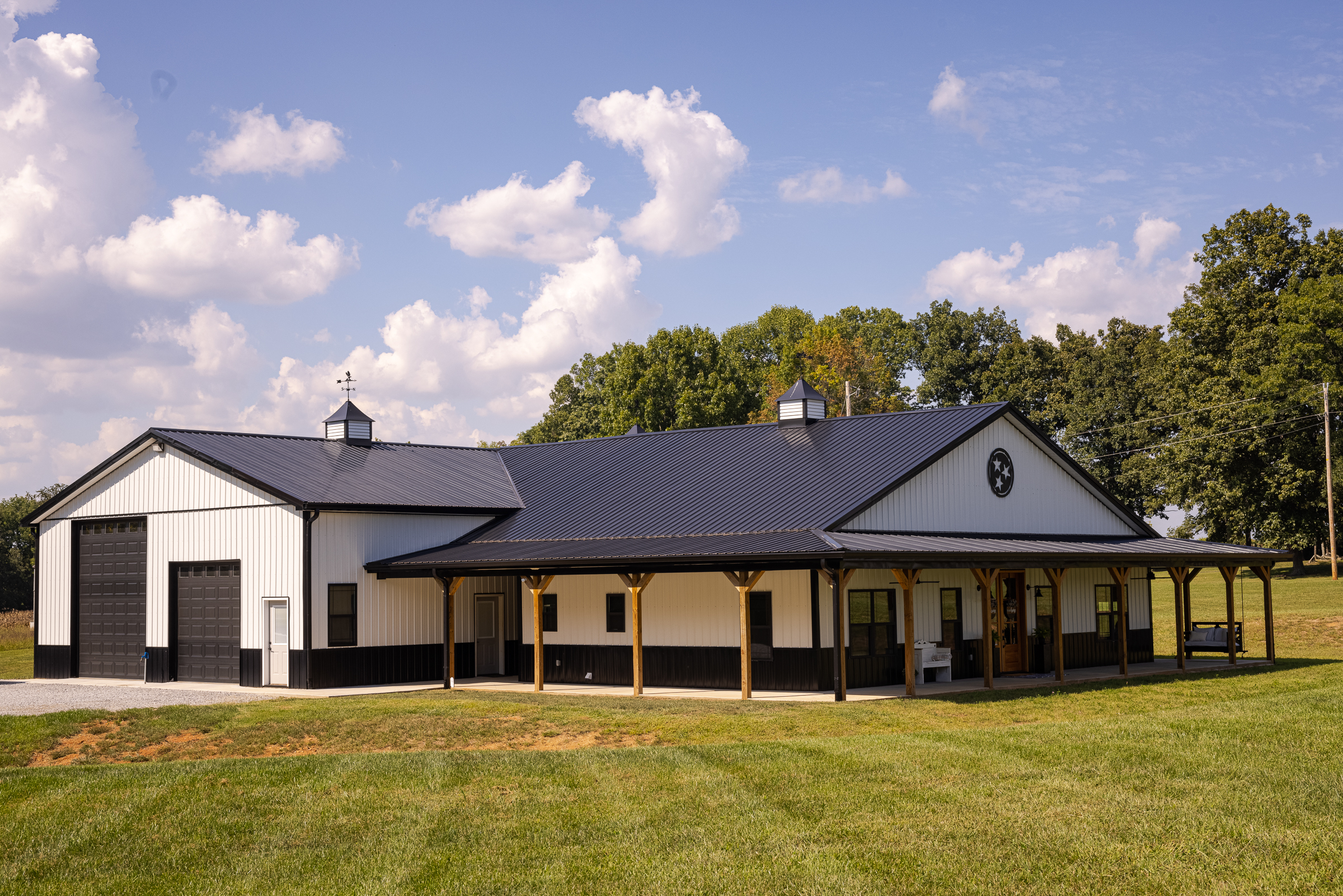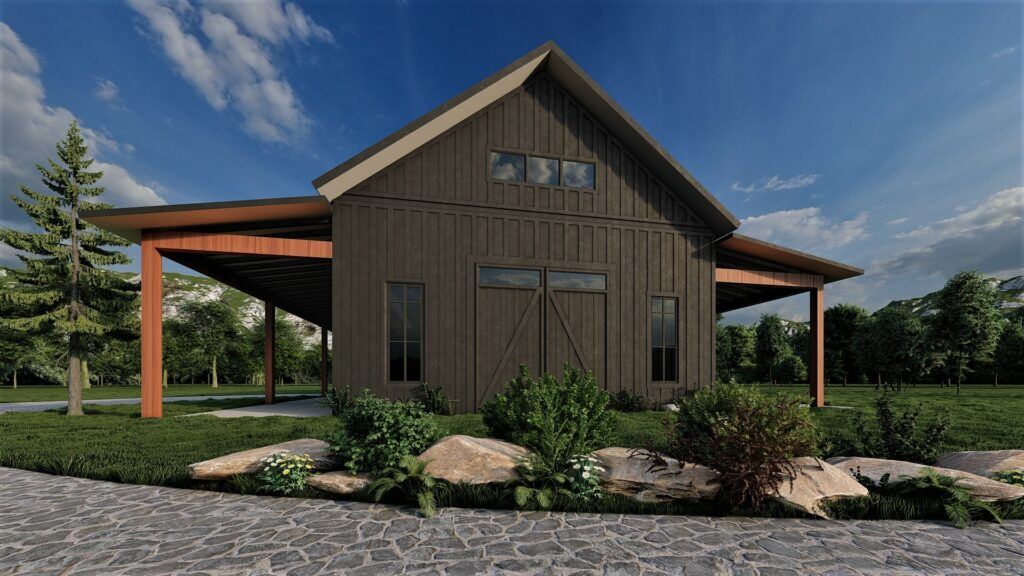Barndominium Builder: Professional Workmanship for Your Desire Home
Barndominium Builder: Professional Workmanship for Your Desire Home
Blog Article
Barndominiums Vs. Standard Houses: a Thorough Comparison of Lifestyle and Functionality
The decision in between barndominiums and standard homes includes numerous aspects, consisting of lifestyle preferences and functional requirements. Barndominiums are identified by their open formats and adaptability, frequently attracting those that focus on common living and flexibility. On the other hand, conventional homes provide a more structured environment, which might much better offer family members looking for privacy and a sense of background. As we take a look at the expense effects and ecological factors to consider, it comes to be clear that the selection expands beyond simple appearances and performance; it invites a deeper exploration of what really defines a home.
Summary of Barndominiums
Barndominiums, a novel real estate fad getting popularity throughout various areas, blend the rustic charm of barn-style design with the capability of contemporary living areas. These distinct structures usually consist of a steel or wood framework, integrating open floor plans and high ceilings with energy-efficient functions. Often positioned on expansive country buildings, barndominiums supply homeowners the chance to take pleasure in a calm way of living while supplying enough room for numerous tasks.
The convenience of barndominiums expands beyond their visual appeal; they can function as both living quarters and useful rooms for hobbies, workshops, or also tiny services. Their adaptive layout permits easy customization, fitting diverse household needs and preferences. Many owners appreciate the reduced maintenance requirements related to steel exterior siding and roofing, contributing to long-lasting longevity.

Features of Standard Houses
Emphasizing ageless style and convenience, standard homes are identified by their distinctive building designs, which frequently reflect historical influences and local appearances. Usual attributes consist of symmetrical facades, gabled roofings, and an emphasis on workmanship, leading to a cozy and welcoming ambience.
Standard homes typically incorporate elements such as crown molding, wainscoting, and wood floor covering, improving their traditional appeal. They commonly include several spaces with defined functions, promoting family communication while enabling for privacy. view now. The layout typically consists of official living and eating locations, which contribute to enjoyable guests and hosting family members gatherings
Outside products such as brick, wood, or rock are regularly used, adding to sturdiness and a feeling of durability. Barndominium repair. Furthermore, lots of standard homes are made with front patios or stoops, cultivating a sense of community and connection with the community
Landscaping plays a considerable function in standard home style, with well-maintained yards and paths that improve aesthetic appeal - learn more. In general, typical homes embody a feeling of nostalgia and stability, attracting those who value heritage and a more organized living atmosphere
Cost Contrast
Generally, an expense contrast between barndominiums and conventional homes reveals substantial distinctions in building and construction expenses and overall financial investment. Barndominiums, typically built from steel or steel frames, commonly incur lower material and labor costs than traditional homes constructed from wood and block. The simplified you could look here style of barndominiums can equate to lowered building and construction times, additionally reducing labor prices and speeding up tenancy.
Typically, the expense per square foot for a barndominium ranges from $100 to $150, while traditional homes can differ commonly, normally dropping between $150 and $300 per square foot, depending on place, products, and style complexity. This expense difference makes barndominiums an appealing choice for budget-conscious purchasers looking for bigger space without compromising quality.
Additionally, barndominiums might cause long-term savings via lower upkeep expenses, power performance, and insurance coverage rates. Their sturdy building products commonly require less upkeep in time compared to conventional homes. It is crucial to consider that while first prices might be lower for barndominiums, the final financial investment will certainly additionally depend on specific modification and wanted features, which can influence the overall expense in both housing kinds.
Way Of Living and Room Factors To Consider
When considering lifestyle and space, barndominiums offer a distinct versatility that charms to a selection of home owners. These hybrid frameworks integrate property coping with practical area, commonly featuring open floor strategies that can be adapted to suit individual needs. This adaptability is especially useful for family members or individuals seeking an individualized living environment, enabling varied usages such as home workplaces, workshops, or recreational locations.

Additionally, the visual allure of barndominiums can accommodate both rustic and contemporary tastes, making them a versatile selection for different layout choices (Barndominium repair). Eventually, the choice in between a barndominium and a traditional home frequently rests on just how well each option aligns with the home owner's way of life aspirations and spatial needs, highlighting the relevance of taking into consideration personal concerns in the decision-making procedure
Environmental Impact and Sustainability
The environmental effect and sustainability of barndominiums existing compelling benefits contrasted to conventional homes. Largely created from steel and other durable materials, barndominiums are frequently developed making use of recycled sources, minimizing the need for brand-new materials and lessening waste. Their layout commonly highlights open spaces, which can cause reduced power usage for heating and cooling compared to traditional homes with even more segmented designs.
Moreover, barndominiums can include lasting attributes such as solar panels, rainwater harvesting systems, and advanced insulation strategies, improving their energy effectiveness. The adaptability of their layout enables property owners to integrate these technologies more seamlessly than in many standard homes, which might call for extensive retrofitting.
In addition, barndominiums often require fewer sources for building and construction because of their simpler, more reliable layouts. This not only lowers the carbon footprint associated with structure however additionally contributes to a much more lasting way of life. In contrast, conventional homes may include greater degrees of power expense and source make use of throughout their lifecycle, from building to maintenance. Overall, barndominiums represent a forward-thinking strategy to sustainable living, straightening with modern ecological concerns.
Final Thought
In recap, the selection between barndominiums and conventional homes pivots on individual lifestyle choices and functional requirements. Barndominiums, with their open designs and lasting materials, cater to those seeking adaptability and common living.
Report this page